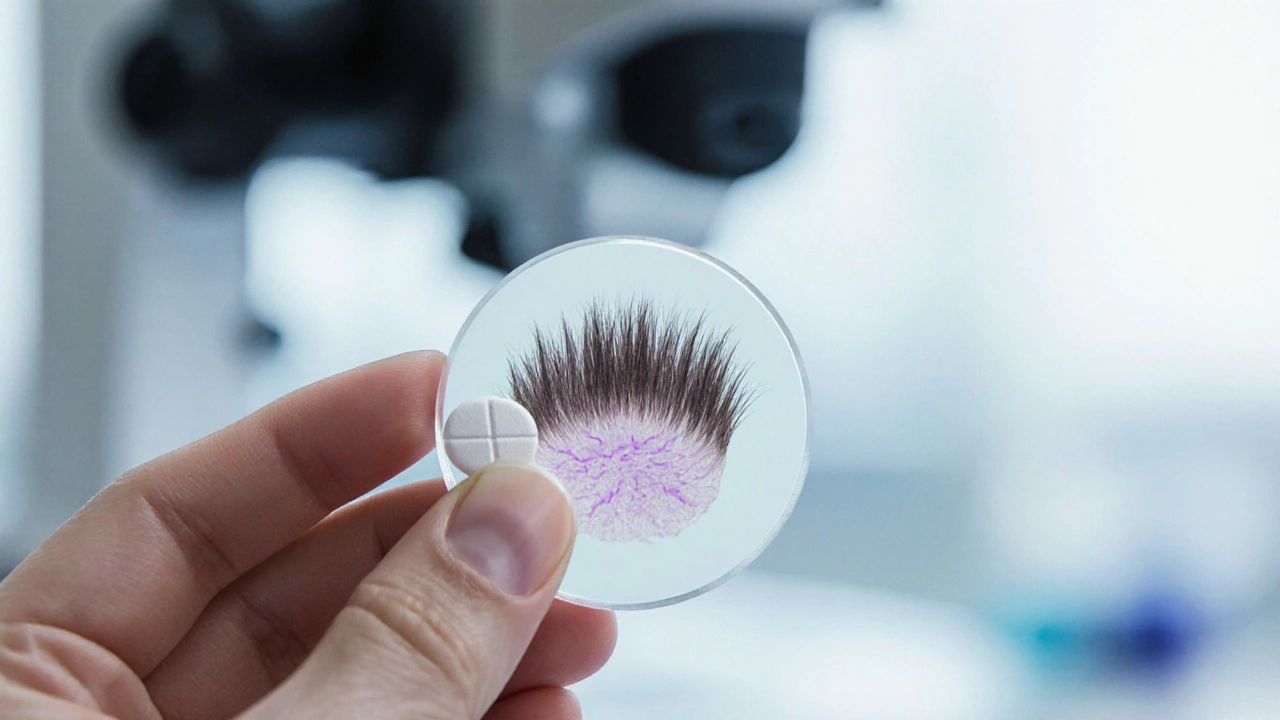Minoxidil: How It Works, Benefits, and What to Expect
When working with minoxidil, a topical vasodilator that encourages hair follicle growth by widening scalp blood vessels, you’re tapping into one of the few FDA‑approved treatments for hair loss. Also known as Rogaine, it primarily targets androgenic alopecia, the most common form of pattern baldness. If you’re looking for a proven hair regrowth solution, minoxidil might be the answer. The drug’s core idea is simple: increase blood flow to dormant follicles, extend the growth phase, and shrink the resting phase. This triple‑action (increase circulation → stimulate follicles → reduce shedding) creates a measurable uptick in hair density for many users within three to six months.
Key Points About Minoxidil Use and Safety
Minoxidil requires twice‑daily application, usually in 2% or 5% liquid or foam form, and works best on a clean, dry scalp. The standard dosage for men is 5 ml of liquid or half a cap of foam; women often start with the 2% solution to lower the risk of scalp irritation. Consistency is crucial—missing applications can interrupt the growth cycle and lead to a temporary setback. Side effects are generally mild; the most common are itching, dryness, or a brief increase in shedding as old hairs fall out to make room for new growth. Rarely, users report unwanted facial hair or dizziness, which signals the need for a medical check. Because minoxidil is a medication, it interacts with certain blood pressure drugs, so anyone on antihypertensives should discuss use with a physician before starting.
Beyond the basics, many readers wonder how minoxidil stacks up against alternatives like finasteride, low‑level laser therapy, or natural supplements. Unlike oral finasteride, which blocks the DHT hormone that shrinks follicles, minoxidil works locally and doesn’t affect hormone levels. This makes it a safer option for those concerned about sexual side effects. Laser devices claim to stimulate follicles with light, but clinical data shows they’re less consistent than minoxidil’s proven vasodilation effect. Natural remedies such as saw palmetto or rosemary oil may offer modest benefits, yet they lack the robust trial evidence that backs minoxidil’s efficacy. In practice, many clinicians recommend a combination approach—minoxidil for direct follicle stimulation plus finasteride for hormonal control—to tackle both sides of the hair‑loss equation.
Understanding the timeline helps set realistic expectations. Most users notice a reduction in shedding after the first 4‑6 weeks, but visible regrowth typically appears after 12‑16 weeks of diligent use. Full results can take up to a year, and continued application is necessary to maintain gains; stopping treatment usually leads to a return of the original hair‑loss pattern within several months. For those planning long‑term use, cost considerations matter: a 3‑month supply of the 5% foam can run $30‑$50, but many online pharmacies offer bulk discounts that bring the price down considerably. Finally, remember that minoxidil isn’t a cure—it’s a management tool that keeps existing hair alive and supports new growth as long as you stay on it. Below you’ll find a curated list of articles that dive deeper into dosage tips, side‑effect management, product comparisons, and real‑world user experiences, giving you the knowledge you need to decide if minoxidil fits your hair‑care plan.
Finasteride vs Alternatives: Pros, Cons & Best Choice
A detailed comparison of Finasteride with its main alternatives, covering effectiveness, side effects, dosage, and best use cases for hair loss and BPH.
read more